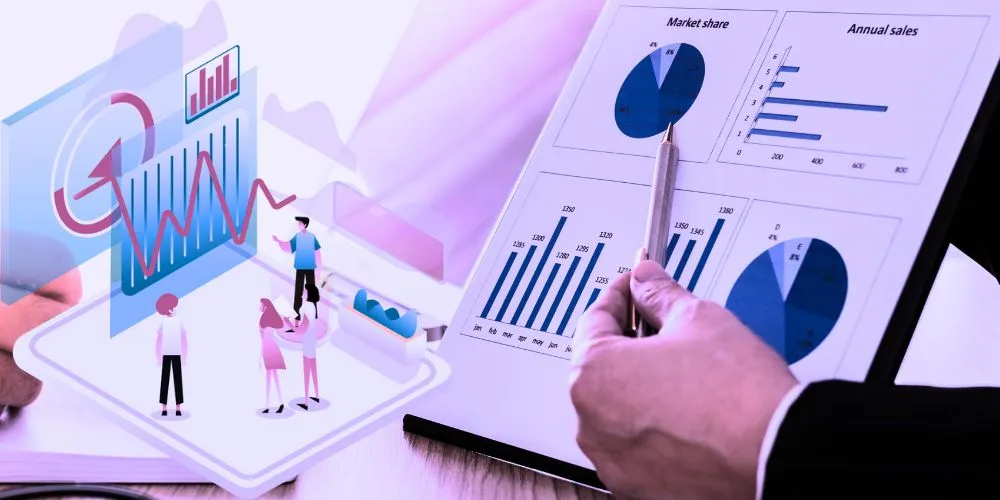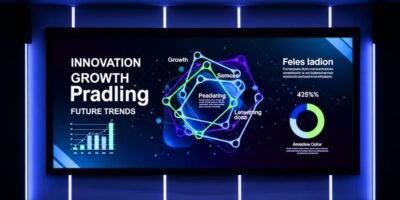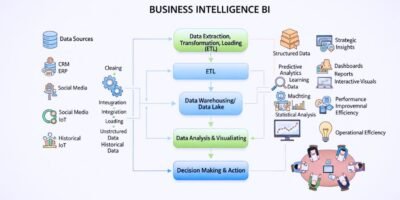Effective communication in presentations goes beyond words. Presentation visualization conveys information, ideas, and messages through visually compelling elements. By integrating engaging visuals into presentations, speakers can capture their audience’s attention, enhance understanding, and leave a lasting impact. This article explores the importance of presentation visualization, key techniques for creating impactful visuals, and the benefits it brings to both presenters and audiences.
The Power of Presentation Visualization
In today’s fast-paced and information-rich world, audiences are inundated with data and content. Presentation visualization helps presenters break through the noise and deliver information memorably and engagingly. Visuals can uniquely simplify complex concepts, evoke emotions, and enhance the presentation experience. Here are some reasons why presentation visualization is essential.
Capturing Attention
One of the most effective ways to capture and maintain an audience’s interest is by using engaging visuals. Whether through striking images, informative graphs, detailed charts, or captivating infographics, incorporating these elements into presentations can instantly capture the audience’s attention and create a visual hook that sparks their curiosity.
Enhancing Comprehension
Visuals convey information more effectively than text alone. They simplify complex ideas, break down data into digestible chunks, and provide visual cues that aid understanding. Visual representations help the audience grasp concepts faster, leading to increased comprehension and retention of information.
Creating Emotional Connection
Well-designed visuals have the power to evoke emotions and create a connection with the audience. Images, videos, and illustrations can elicit emotional responses, making the presentation more memorable and impactful. Emotionally engaged audiences are likelier to resonate with the message and retain the information presented.
Techniques for Creating Impactful Presentation Visualization
When it comes to creating impactful presentation visualizations, there are a few techniques that can make a difference. One of the most important things to remember is to keep things simple and easy to understand.
Choose Appropriate Visual Formats
Select visual formats that align with the presentation’s content and objectives. Use charts and graphs to present data, images, illustrations to convey concepts, and videos to demonstrate processes or tell a story. Consider the message you want to share and the audience’s preferences to determine the most effective visual format.
Simplify Complex Information
When communicating complex ideas to an audience, it can be easy to overwhelm them with too much information at once. That’s why it’s important to break those ideas down into simpler components and represent them visually using diagrams, flowcharts, or metaphors. Doing this can make the information more accessible and easier to digest.
Utilize Color and Contrast
Colors significantly impact the visual appeal and comprehension of information. Choose a color palette that complements the message and ensures legibility. Use contrast to make important elements stand out and guide the audience’s focus. However, maintain a balance and avoid overwhelming the audience with excessive colors or distracting visuals.
Incorporate Storytelling Elements
Weaving storytelling elements into visuals can enhance engagement and make the presentation more compelling. Use images that evoke emotions, incorporate relevant narratives, or showcase real-life examples. Visual storytelling captivates the audience’s imagination and enables them to connect with the presentation more deeply.
Keep it Consistent and Clean
Maintain visual consistency throughout the presentation to create a cohesive and professional look. Use consistent fonts, colors, and visual styles to ensure a harmonious visual experience. Avoid cluttered visuals and excessive text, as they can overwhelm the audience and dilute the presentation’s impact.
Benefits of Presentation Visualization
Presentations that use visualization can effectively convey complex information clearly and concisely.
Improved Audience Engagement
Engaging visuals capture and maintain the audience’s attention, preventing boredom and distractions. Visuals break the monotony of text-heavy slides and create a dynamic and interactive presentation experience. Engaged audiences are likelier to retain information, actively participate, and respond positively to the message.
Enhanced Retention and Comprehension
Presentation Visualization aids in information processing and retention. The combination of visual and verbal communication enhances comprehension and recall. Presenters who effectively utilize presentation visualization are likelier to leave a lasting impact and ensure their key messages resonate with the audience.
Increased Persuasiveness
It’s no secret that visuals have a lot of power when it comes to persuasion. A compelling image or graphic can evoke all emotions, from awe to anger to joy. When those visuals are well-designed and thoughtfully crafted, they can enhance the credibility of the person presenting them. After all, if someone takes the time and effort to create something that looks great and makes sense, it’s much easier to trust what they say.
Improved Clarity and Message Delivery
Visuals simplify complex information, making it easier for the audience to understand and follow the presenter’s message. Clear and concise visuals reinforce the key points, ensuring the audience grasps the main ideas effectively. This clarity enhances the overall effectiveness of the presentation.
Conclusion
Presentation visualization is a powerful tool that enables presenters to engage and captivate audiences. Presenters can enhance comprehension, evoke emotions, and make a lasting impact by incorporating visually compelling elements. Techniques such as choosing appropriate visual formats, simplifying complex information, utilizing color and contrast, incorporating storytelling elements, and maintaining visual consistency contribute to the effectiveness of presentation visualization. By embracing the art of presentation visualization, speakers can elevate their communication skills, create memorable experiences, and deliver impactful presentations that resonate with their audiences.













